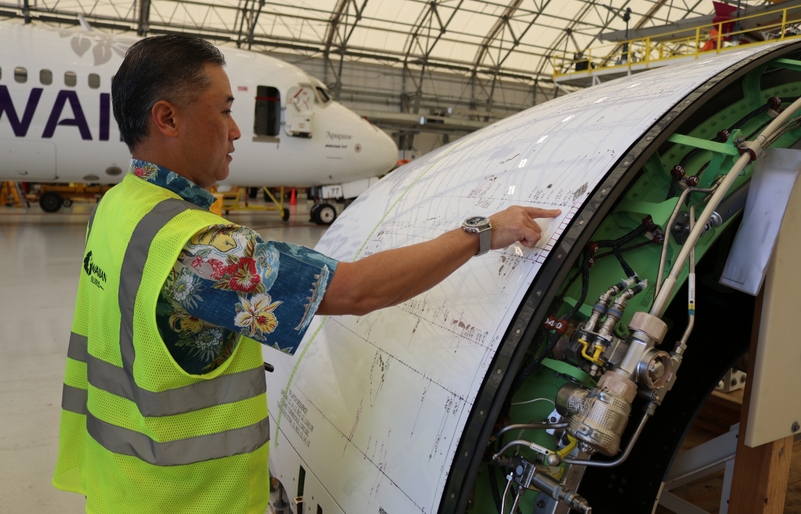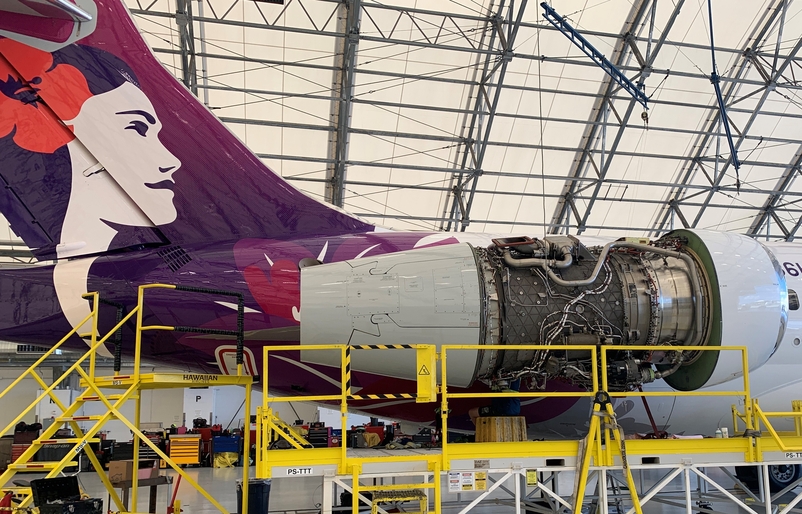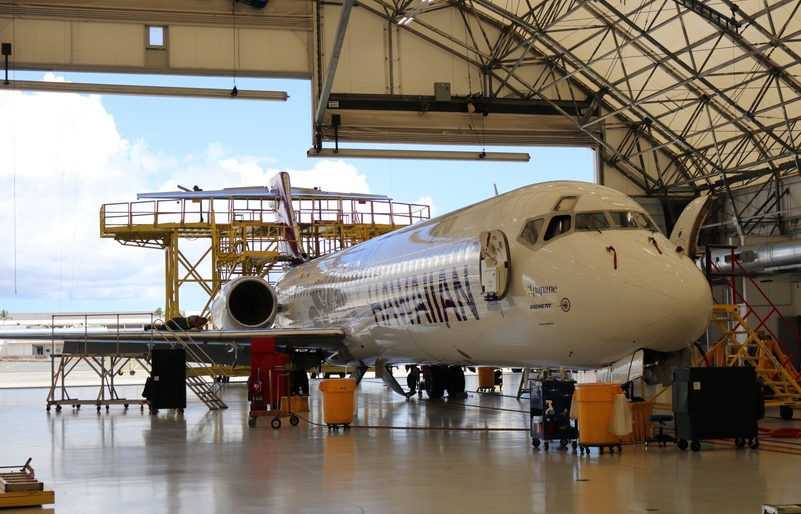You may have seen the photos and videos of runway 8L and Taxiway Foxtrot at Honolulu’s Daniel K. Inouye International Airport (HNL), where we have temporarily parked many of our Hawaiian Airlines aircraft due to COVID-19 developments affecting travel.
As the only major Hawai‘i-based airline, with over 90 years of service to our community, images of our fleet on the ground and not in the sky serve as a powerful daily reminder of the severity of this crisis. At any given time, at least 52 aircraft in our 61-jet fleet can be seen resting on HNL’s tarmac, waiting for the moment they can reconnect Hawai‘i to the world.

While we rotate certain aircraft in a significantly reduced schedule designed to maintain essential connectivity for our community and shippers, including complimentary Neighbor Island flights to healthcare providers this month, our parked planes continue to get plenty of care from our mechanics. Our roughly 500-person maintenance team – from mechanics to engineers and supply agents – has been working around the clock to properly service our aircraft and keep our fleet in tip-top flying shape to bring our full network back online when we are ready to do so.
“Working during this COVID-19 pandemic is surreal. Every day we come to work, we see nearly the entire fleet of aircraft grounded,” said Brandon Ho, line aircraft mechanic at Hawaiian. “Regardless, we still show up to work and do our job to assure the planes are fit to fly when the time comes.”

Our transpacific routes now include one daily non-stop flight between HNL and San Francisco (SFO) and Los Angeles (LAX). Three of our 24 long-haul wide-body Airbus A330s are taking turns operating these two routes, while the remaining aircraft receive ongoing service. We also deploy A330s on our now once-weekly nonstop flights connecting HNL and Pago Pago in American Samoa; however, we have suspended this service through at least April 23 at the request of the U.S. territory government as it seeks to prevent the spread of COVID-19.

Our current fleet of 17 A321neos, our mid-range narrow-body aircraft that serve smaller U.S. West Coast markets, are all parked. We are rotating through our Neighbor Island passenger fleet of 20 Boeing 717s to keep all aircraft running. Our ‘Ohana by Hawaiian operations are following a similar process with two of its ATR 42 passenger aircraft serving the more rural communities of Moloka‘i and Lāna‘i, as well as the all-cargo ATR 72 fleet moving products between the islands.
Throughout the day and night, our maintenance teams are hard at work at our Honolulu hub and destination stations to ensure our planes remain fine-tuned and ready to fly. They’ve got their tools in hand to perform both multi-level checks required by the Federal Aviation Administration (FAA), as well as the aircraft and engine manufacturers, and daily maintenance on the engines and airframe. This work is done regardless of whether the aircraft has flown.

“Aircraft maintenance tasks run on clocks. Even though we are flying a reduced flight schedule, the clock keeps ticking and mostly does not care if an airplane is in the air or not,” said Jonathan Yang, director of line maintenance at Hawaiian. Yang oversees 111 line mechanics who, despite an industry-wide slowdown caused by the COVID-19 pandemic, remain busy taking care of each of our planes.

Our mechanics clock in a collective 120 hours each day just performing overnight checks on our 717s.* For our transpacific fleet, mechanics are busy conducting various checks scheduled on weekly, bimonthly, monthly, tri-monthly, and annual intervals.
“We have to continue doing these periodic checks to verify that certain systems and/or components of an aircraft are operating normally. This allows our fleet to remain in a flight-ready condition,” Yang added.

In addition to the scheduled tasks, which include routine maintenance from checking tire pressures and maintaining oil levels, our engineers and mechanics are focused on improving the in-flight experience for our guests by making modifications to optimize A321neo cabin temperatures – which is estimated to take mechanics some 140-180 hours per aircraft. We are also conducting robust cabin interior inspections, repair of seats and tray tables and deep cleaning throughout.

While the COVID-19 pandemic has created unprecedented challenges for all of us and temporarily changed the landscape of the aviation industry, our guests can remain confident in the safety and reliability that Hawaiian Airlines has been known for over 90 years.
“We all work together to ensure our aircraft are ready to fly when this situation is over. It's been challenging as this is all new to everyone. Flexibility has been key to staying positive and focused on the main goal of protecting our aircraft for the return of our great company to full operational status,” said Joe Mooney, a line aircraft mechanic at Hawaiian. “The maintenance of our planes has continued as we transition to putting them to bed, so to speak. They are resting for the big awakening, which will hopefully come sooner rather than later. I have no doubt that our team at Hawaiian Airlines will roar back to full operations soon and continue our honored tradition of sharing Hawai‘i with the world.”
*An FAA requirement that requires us to check each aircraft every 48 hours regardless of flight hours logged.